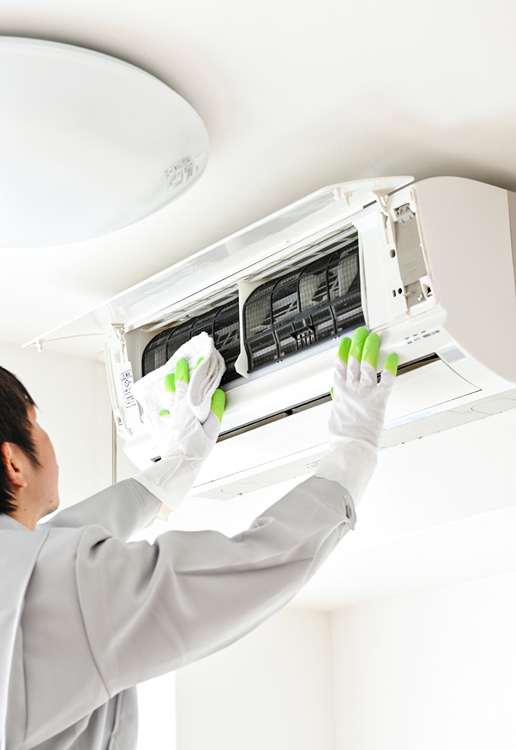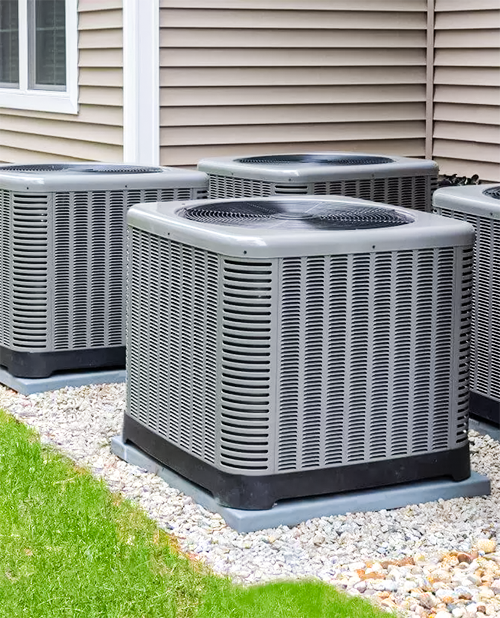Troubleshooting Common Ac Problems
The warm weather of summer is often accompanied by the need for air conditioning, yet many individuals are unaware of common issues that can arise with their AC system.
In order to ensure optimal performance and longevity, it is essential to have a basic understanding of troubleshooting techniques.
This article will provide an overview of some of the most frequent problems associated with air conditioners and tips on how to approach resolving them.
The goal is not only to help those who may be dealing with unexpected breakdowns but also to enlighten readers about preventative measures they can take in order to avoid costly repairs or replacements down the line.
With this knowledge, one can feel more confident when making decisions related to AC maintenance and repair.
Understanding The Basics Of Ac Systems
Air conditioning systems are widely used in homes, businesses and industrial complexes to regulate the temperature of a space. The efficiency and longevity of an AC system depends on its proper operation, regular maintenance and timely diagnosing of any issues that may arise.
AC systems generally use refrigerants as their primary cooling agent, which are circulated through air-handling units or ducts for distribution throughout the space. These components must be regularly inspected to ensure they remain clean and free from damage or blockage.
Preventative maintenance is essential to maintain optimal performance in all aspects of the system, including electrical connections, fan motors and compressor action. Properly maintaining a unit helps identify potential problems before they become serious enough to cause major repairs or worse – complete breakdowns. Additionally, it can help reduce energy consumption by ensuring the unit runs at optimum levels.

Regular inspections can also assist with diagnosing issues quickly; this allows for faster resolution times so that users won’t have to suffer long periods without cooled air.
Checking The Thermostat Settings
The first step in troubleshooting common AC problems is to check the thermostat settings. It’s important to make sure that temperatures are being accurately read and that all necessary adjustments have been made accordingly.
In order to do this, it’s important to inspect the unit itself for any possible damage or obstructions blocking off air vents. Additionally, verify that the temperature set point is appropriate for cooling needs of your space and adjust if necessary.
Once satisfied with these steps, ensure that the fan switch is appropriately set as well. This allows you to determine whether a continuous flow of air is available throughout your home or office setting, which ensures optimal comfort levels during hot summer months when AC units are most heavily utilized.
If there appears to be an issue here, some adjustment may be required before further investigation into additional causes can occur.
Inspecting The Air Filter
The importance of inspecting the air filter cannot be overstated.
A clean air filter helps to prevent dust and other particles from entering a home’s ventilation system, creating healthier indoor air quality for inhabitants.
It is important to compare sizes when replacing an existing air filter; if the size does not match, it can lead to inefficient operation or even damage to an AC unit.
Additionally, regular replacement of an air filter ensures that any debris in the atmosphere is removed on a consistent basis.
This reduces strain on the AC unit and keeps energy costs low by avoiding unnecessary use of power due to clogged filters blocking airflow.
Ultimately, this leads to improved performance while simultaneously helping ensure that your family remains safe and healthy in their own home.
Investigating Refrigerant Leaks
Refrigerant leaks can cause a variety of problems in air conditioning systems and must be identified and addressed.
To detect damage caused by refrigerant leaks, technicians should first identify potential causes such as loose connections, damaged hoses or valves, and cracks in the system lines. Inspecting these components for physical signs of wear is essential to detecting any damage that could have been caused by a leak.
The next step is to conduct an electronic sniff test using special equipment designed to measure levels of refrigerants within the system. This helps pinpoint any areas with lower-than-normal readings which could indicate a possible leak location.
Once located, repairs can then be made to stop the leak before adding new refrigerant into the system. A final pressure test should also be conducted to ensure there are no other hidden issues present.
With careful diagnosis and repair techniques, it is possible to restore proper operation of an air conditioning system affected by a refrigerant leak.
Examining The Condenser Coils
The condenser coils are a critical component of an air conditioning system, as they help to regulate the internal temperature.
It is essential that these coils remain clean and clear of debris in order for the air conditioner to function effectively.
To ensure this, regular cleaning of the condenser should be part of any maintenance routine.
This can be done by thoroughly hosing down the unit with a garden hose or pressure washer.
Additionally, it is important to check for any blockages or clogs that may have formed on the coil surface over time, as these will reduce airflow through the system and negatively impact its performance.
Taking measures such as regularly clearing away leaves and other debris from around the unit can prevent these types of obstructions from forming.
In short, proper cleaning and maintenance of the condenser coils is key to keeping an AC unit running optimally.
Assessing The Electrical Connections
In order to assess the electrical connections of an AC system, checking fuses and testing capacitors should be done.
Fuses are used as a safety measure in case of any overcurrent and can be tested with a multimeter or continuity tester by measuring resistance between two ends. If no current is being measured, then the fuse needs to be replaced.
Testing capacitors requires special tools like capacitor testers which measure the stored energy within it in order to determine if they need replacement or not.
It’s essential that other components such as wires and contactors also be checked for damage along with these tests. Wires must have strong insulation while contactors should move freely when powered on; otherwise they may need replacing.
With thorough checks of all these parts, one can ensure their AC system is working efficiently and safely.

Examining The Evaporator Coils
Accurately examining the evaporator coils is essential in troubleshooting any air conditioning problems. The evaporator coils are responsible for maintaining a comfortable temperature inside the building by absorbing heat from the air that passes over them.
In order to ensure they operate optimally, it’s important to regularly clean and maintain them. This can be done by using an approved coil cleaner or by brushing off dirt and debris with a soft-bristle brush.
Additionally, checking for signs of corrosion or leaking refrigerant should also be part of regular maintenance routines; if either issue is observed, then professional help should be sought immediately as these issues require specialized tools and training to repair correctly.
To summarize, cleaning and inspecting evaporator coils on a regular basis is key to keeping an AC system functioning smoothly and successfully troubleshooting common problems. Regularly removing dirt and debris will not only keep the unit running efficiently but also extend its lifespan significantly – ultimately helping you save money in the long run.
Furthermore, checking for signs of leakage or corrosion allows you to detect potential issues before they become major repairs, allowing fast intervention measures to prevent more costly solutions down the line.
Conclusion
The process of troubleshooting common air conditioning problems requires an understanding of the basics of AC systems, as well as a thorough investigation.
This includes checking and adjusting thermostat settings, inspecting the air filter, investigating any refrigerant leaks, examining both condenser and evaporator coils, and assessing all electrical connections.
A good maintenance routine will go a long way in preventing future issues from arising with your AC system. Regularly scheduled inspections can help to ensure that minor issues are identified and addressed before they become more serious and costly repairs are needed.
Taking these steps is essential for maintaining the efficiency and proper functioning of your AC unit.







